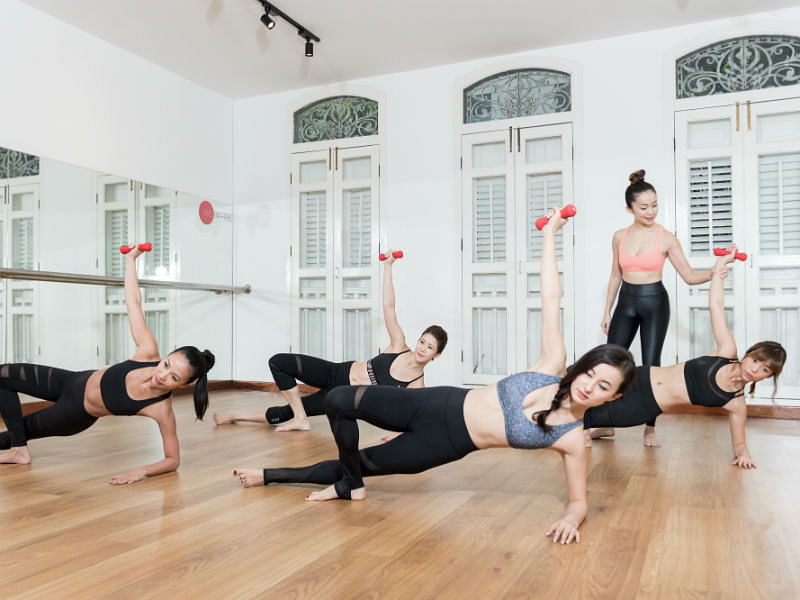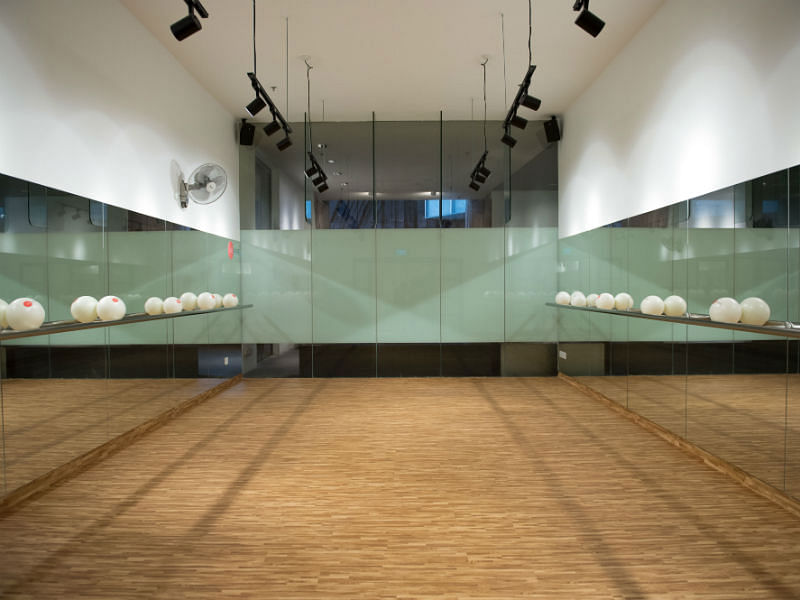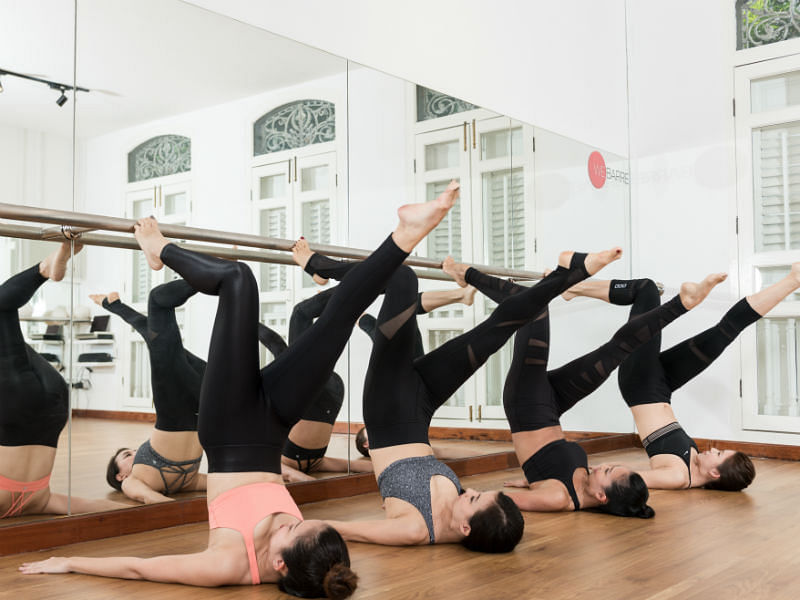
Photo: WeBarre
For the uninitiated: Yes, barre is ballet-inspired, but no, it’s not a ballet class. Seven years ago it was gaining traction in the States, and soon after we heard that it was the go-to workout of many a Victoria’s Secret model.
In January 2016, WeBarre (Singapore’s) first boutique barre studio opened its doors, and it didn’t take long for other studios to catch on. This month saw the opening of WeBarre’s fourth studio at Dhoby Gaut (inside the conveniently located School of the Arts), and we sat down with Master Trainer Rachel Fraser to ask her just what barre is all about, and why Singaporeans are hooked.

One of the Dhoby Gaut studio’s three workout rooms
Photo: WeBarre
Is barre a dance class?
The TLDR version is: Barre is “a blend of traditional ballet exercises but designed for the average person,” says Rachel, who conceived the WeBarre method. So no, you won’t be dancing, nor will you need a dance background, flexibility, or even coordination. There’ll be basic ballet moves like plies, but there will be no complex barre work, and definitely no choreographed routines.
So what actually takes place during a class?
Control, control, control. We took classes at WeBarre and survived the burn to tell you what you’re in for. The hour-long signature class workout is divided into four segments to target different parts of the body (arms, legs, glutes and core), with a five minute HIIT section. Within each segment participants will be guided through small, isometric movements at the barre, on the mat, or with props like weights, elastic bands, gliders and balls.
How difficult is barre, anyway?
The movements themselves are easily enough to execute. The bigger difficulty is maintaining that stamina to last through the class. Newbies will find themselves struggling with the shakes (and wanting to murder their instructor). Imagine sinking into a deep squat, and being told to bend your knees in small one-inch increments (these tiny movements are called pulsing). You’ll discover areas of pain that you didn’t even know existed.
Repetition is a big thing here. The weights may look laughably light (0.5kg and 1kg) but you won’t have the energy to scoff by the end of it. “We build muscles by repetitions and keeping the consistency of the movement,” says Rachel. “By holding the tiny weights and doing really small movements, you’re working the smaller muscle groups and getting deeper into the muscles.”
Does it hurt? Yes. YES. Is it good for you? Grumpily, we also concede yes.

Photo: WeBarre
How is it different from yoga and pilates?
Barre is actually a hybrid of the two, with ballet elements, Rachel points out. “You’re getting your active stretching like in yoga, you’re getting core control and the fundamentals of pilates as well as strengthening and lengthening the muscles.” No yoga poses are taught here, but there are other ways to get those muscles moving and stretching.
There’s also a cardiovascular fitness aspect to barre. Trust us when we say that within ten minutes your heart rate will be up, sweat will be flowing, and the motivation to work hard to eat that cheesecake will be kicking in.
What do I get out of it?
Who doesn’t want that long, lean dancer’s bod? Barre is all about lengthening muscles, Rachel says, and that means you’re working towards that poised posture and toned physique. After the initial few weeks of your body getting used to a new workout, you’ll start to see changes in your shape.
But like any workout, transformation comes with pain – and a minimum of three classes a week, advises Rachel.
It’s something to bear in mind when an instructor chirps “Embrace the shakes!” and “Feel that burn!”. Barre is much more painful that those graceful swan arms will have you believe, but from experience we can tell you that it’s also deeply satisfying. And if an hour of sweating it out gets you endorphins and a toned tum, we can see why the barre fever is contagious.
ALSO READ: 7 FITNESS GOALS TO SET YOU ON THE RIGHT TRACK FOR 2018

